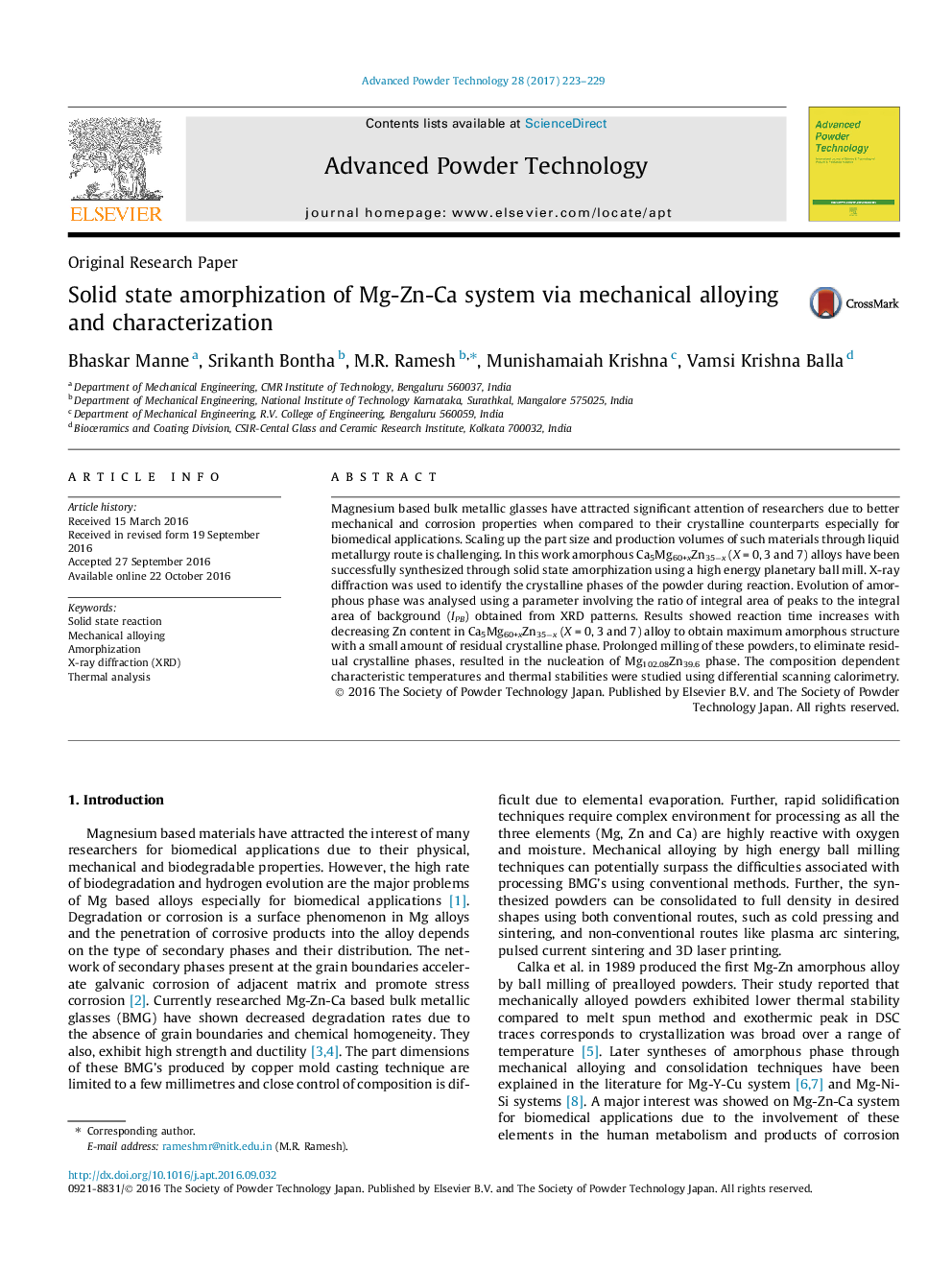| Article ID | Journal | Published Year | Pages | File Type |
|---|---|---|---|---|
| 4762530 | Advanced Powder Technology | 2017 | 7 Pages |
â¢Mg-Zn-Ca amorphous alloys are synthesized through solid state amorphization.â¢Milling time and particle size in amorphization depend on amount of zinc alloying.â¢Ratios of integral area of peaks to background from XRD assess reaction trends.â¢Thermal stability of the alloys were analysed using Kissinger's plot.
Magnesium based bulk metallic glasses have attracted significant attention of researchers due to better mechanical and corrosion properties when compared to their crystalline counterparts especially for biomedical applications. Scaling up the part size and production volumes of such materials through liquid metallurgy route is challenging. In this work amorphous Ca5Mg60+xZn35âx (XÂ =Â 0, 3 and 7) alloys have been successfully synthesized through solid state amorphization using a high energy planetary ball mill. X-ray diffraction was used to identify the crystalline phases of the powder during reaction. Evolution of amorphous phase was analysed using a parameter involving the ratio of integral area of peaks to the integral area of background (IPB) obtained from XRD patterns. Results showed reaction time increases with decreasing Zn content in Ca5Mg60+xZn35âx (XÂ =Â 0, 3 and 7) alloy to obtain maximum amorphous structure with a small amount of residual crystalline phase. Prolonged milling of these powders, to eliminate residual crystalline phases, resulted in the nucleation of Mg102.08Zn39.6 phase. The composition dependent characteristic temperatures and thermal stabilities were studied using differential scanning calorimetry.
Graphical abstractDownload high-res image (144KB)Download full-size image
